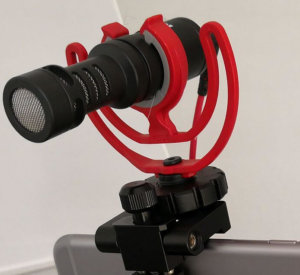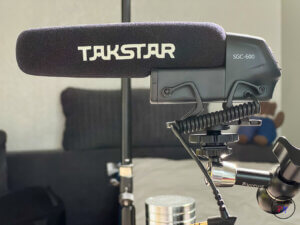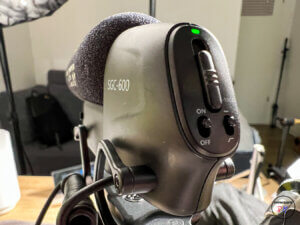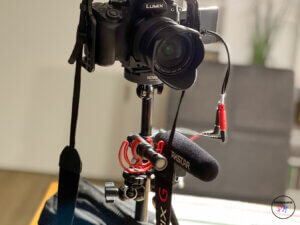A new microphone for video recordings
Often repeated but still true is the phrase that good audio quality is as important as the video recording itself.
Introduction

I’ve been using the Rode VideoMicro as a microphone for video and of course especially recordings for my Youtube channel for some time now. I also use a lavalier microphone from time to time and a radio microphone outside.
For a long time, the Rode VideoMic NTG was on my wish list, because it offers more possibilities. For one thing, it is more directional and has its own gain control, can be used as a USB microphone, and so on.
With such a consideration, however, the question arises directly, do you need all the setting options and is the microphone then worth almost 5 times the price.
 Research
Research
And then one begins to investigate. It turns out that one feature, the automatic switching off of the microphone, works in principle. However, if the camera only goes to sleep mode, there is no guarantee that the microphone will turn on again when the camera is subsequently woken up. Regardless of the fundamental question of a permanently installed battery.
Using it as a USB microphone is nice, but I haven’t missed it yet either. I have so far the small VideoMicro in voice over recordings or guidance with OBS either directly but mostly connected via the Zoom H1n. There are then always fewer features left, so that the price difference is relative again.
Selection

After further research, especially after the video of Curtis Judd with a comparison of the Rode NTG, the Deity D3 Pro and the Takstar SGC600, I was surprised how small the differences are, and have therefore decided for the inexpensive Takstar SGC 600, which is available for under 40, – €.
The microphone consists mainly of plastic elements, but still seems sturdy. The accessory shoe, which includes a 3/8″ tripod thread for mounting on a microphone stand, is made of metal. Also included is a splitter cable that can be used to connect the microphone to smartphones and an AA battery. The solution of the Rode VideoMicros with a detachable and thus replaceable cable, also against TRRS, would have pleased me better.
I recorded a video once with the Takstar SGC600 and the video mic for comparison:
The shockmount, which should prevent the transmission of noise from the camera to the microphone is very stiffly worked. The question here is to what extent this is so effective.
 The microphone comes with fewer features than the VideoMic NTG. It has to be switched on and off again. However, since the microphone is powered by an AA battery, if it runs out, you can easily replace it. In the technical data it is stated that with one battery the microphone can be operated up to 100h.
The microphone comes with fewer features than the VideoMic NTG. It has to be switched on and off again. However, since the microphone is powered by an AA battery, if it runs out, you can easily replace it. In the technical data it is stated that with one battery the microphone can be operated up to 100h.
In addition, there is no continuous gain control, but only in 3 steps +10dB,0,-10dB. Disadvantageous is certainly also that the connection cable is permanently installed.
In addition, there is a low-pass filter, which, however, filters all frequencies below 200Hz, and that then already interferes with the voice. I have therefore preferred to leave it switched off in my recordings until now.
 But let’s take a look at the results. For comparison, I recorded simultaneously with the Rode VideoMic. Both mics were connected to the camera via a splitter cable, so the left channel had the recordings from one mic and the right channel had the recordings from the other mic.
But let’s take a look at the results. For comparison, I recorded simultaneously with the Rode VideoMic. Both mics were connected to the camera via a splitter cable, so the left channel had the recordings from one mic and the right channel had the recordings from the other mic.
For comparison, the clips were duplicated and the audio was again split between the two channels. The only adjustment made was to normalize the audio in Da Vinci Resolve. The camera and microphones were mounted on a lamp stand so that the distance to the microphone was slightly more than 30cm.
The recording level in the camera was set to -10dB. And there the difference is quite small. With the gain control almost only the -10 DB is usable, 0 DB is hard on the border to overdrive and +10dB considerably too loud, even with a smartphone.
Conclusion
The Takstar SGC600 is certainly not a bad choice for the price. However, I sent it back because the difference was just too small compared to the VideMikro.
ciao tuxoche



